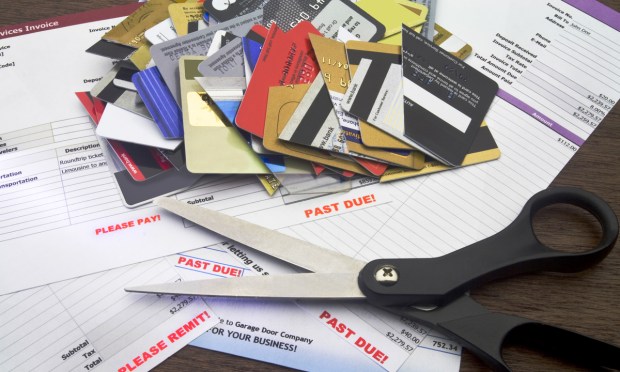
Credit card balances and delinquencies have been rising as consumer spending remains strong, but government support drops from pandemic levels.
During the third quarter, large bank credit card nominal balances continued to grow, and all stages of delinquency approached the highest levels on record since 2012, according to a report released Thursday (Jan. 11) by the Federal Reserve Bank of Philadelphia.
Compared to pre-pandemic levels, all stages of delinquency are now higher, according to the report. Credit card nominal balances topped pre-pandemic levels in 2022.
“Greater consumer fragility is also evident in payment behavior, with a greater share of consumers revolving all or some portion of their cycle end balance,” Gene Huang, principal financial economist, and Anna Veksler, senior analyst, at the Philadelphia Fed, wrote in the report.
That trend has been driven by strong consumer spending and reduced government support, compared to the pandemic period, according to the report.
Seeing these changes, large banks have been granting fewer credit line increases and reducing credit lines more frequently over the past four quarters, the report said.
When it comes to mortgages, first-lien mortgage originations dropped to historic lows due to high interest rates and elevated housing prices, per the report.
“New homeowners are spending a higher share of their income on housing expenses, as is evident from an elevated original front-end debt-to-income ratio,” Huang and Veksler wrote.
First-lien mortgage delinquencies remain historically low, as they have been in recent quarters, according to the report.
Other data from the Federal Reserve, too, shows that consumers loaded up on debt before the holidays and are feeling the pinch of that added debt in the form of rising delinquencies.
The Fed data from earlier this month also showed that personal loans — which consumers tend to turn to for a consolidation of their debt into obligations with lower interest rates — grew at a 12.3% annualized pace in November.
VantageScore said in a Jan. 4 news release that consumers’ increased dependence on personal loans and higher-interest credit products could make it harder for them to pay their bills in the months ahead.
“There is a growing concern that some consumers’ holiday spending is adding unsustainable levels of credit card and personal loan debt,” Susan Fahy, executive vice president and chief digital officer at VantageScore, said in the release.